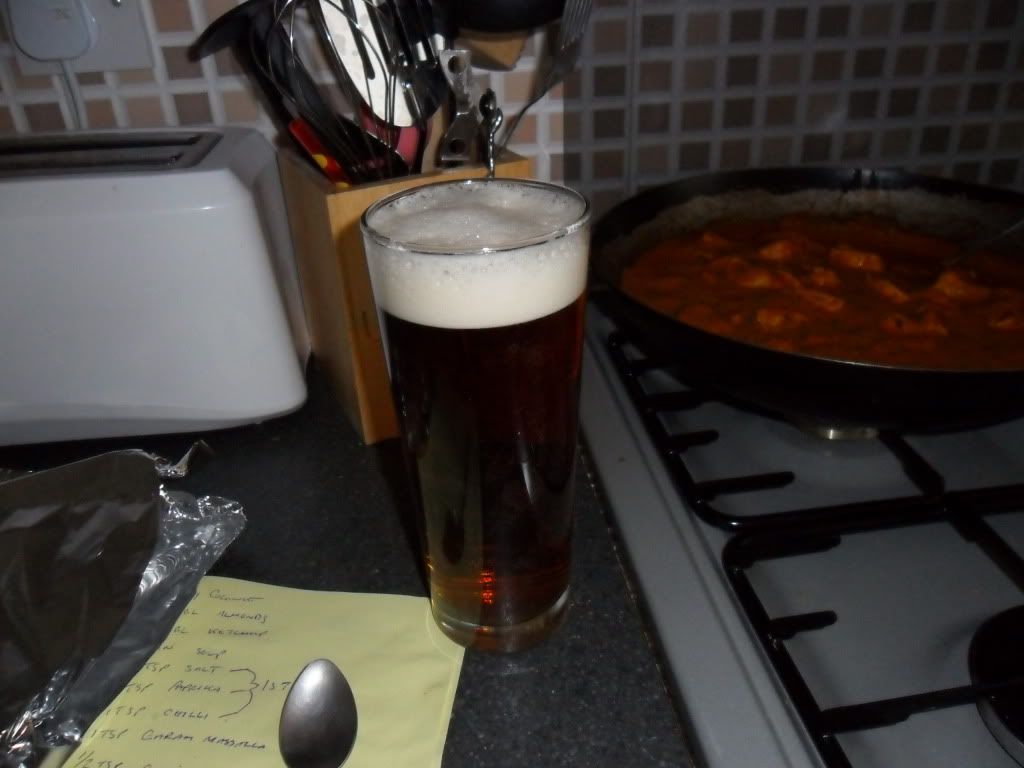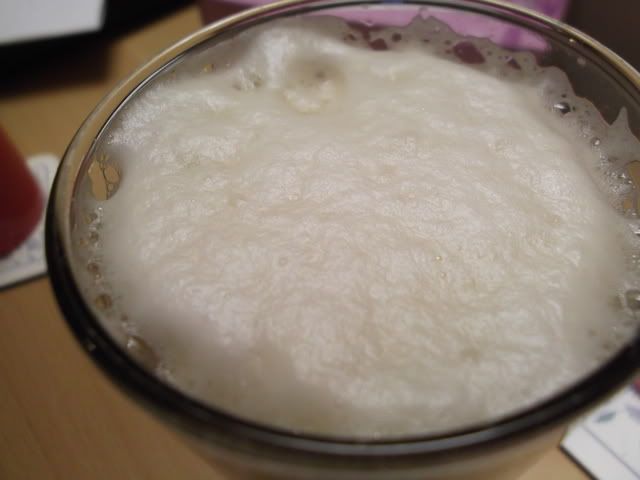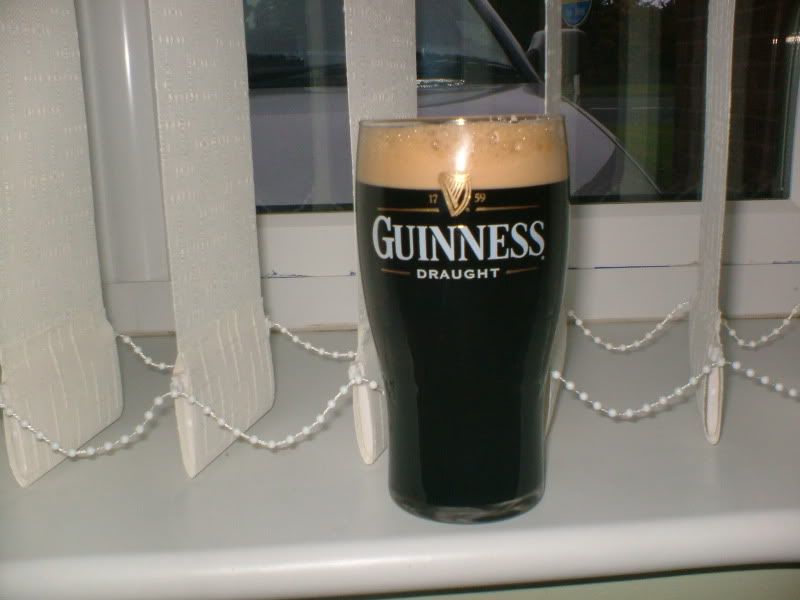coca cola fizz
-
mr b
coca cola fizz
hi there hope someone can help with a fizz or head problem.
some of my beers end up, when poured into a glass, with bubbles that are too big to form a proper creamy head, other times when i pour a bottle into the glass i get a nice head which last till the bottom of the glass.
sometimes it seems as though one batch is affected more than others sometimes its some bottles more than others in the same batch. any hints or tips on what i´m doing write or wrong would be greatly appreciated.
i generally use muntons 1.8kg kits sometimes dry hopped using the supplied yeast
i start in a fermenting bin then after a 2-3days siphon into a glass fermenting balloon with airlock
after bubbles stop coming out the airlock i siphon back into a bin with priming sugar about 75-100g pre-dissolved for 5 gallons
and then bottle into swing top bottles (grolsch style)
cheers
some of my beers end up, when poured into a glass, with bubbles that are too big to form a proper creamy head, other times when i pour a bottle into the glass i get a nice head which last till the bottom of the glass.
sometimes it seems as though one batch is affected more than others sometimes its some bottles more than others in the same batch. any hints or tips on what i´m doing write or wrong would be greatly appreciated.
i generally use muntons 1.8kg kits sometimes dry hopped using the supplied yeast
i start in a fermenting bin then after a 2-3days siphon into a glass fermenting balloon with airlock
after bubbles stop coming out the airlock i siphon back into a bin with priming sugar about 75-100g pre-dissolved for 5 gallons
and then bottle into swing top bottles (grolsch style)
cheers
-
Greatcthulhu
Re: coca cola fizz
As far as I understand it, large bubbles are formed when the beer hasn't been conditioned for long enough. The longer the beer is left, the smaller th bubbles will be
-
Spud395
Re: coca cola fizz
1st thing I would look at, especially if it effects some bottles and not others is your glassware.
How do you was it? Washing up liquid is full of fats which kill the head on beer.
And like was said above big bubbles need longer conditioning time
How do you was it? Washing up liquid is full of fats which kill the head on beer.
And like was said above big bubbles need longer conditioning time
-
Geezah
Re: coca cola fizz
Not just the bottles, but also the glass you pour in to.
I wash all my kit & glasses with soda crystals, rinse, then into a thin bleach solution (1/2 cup to 20l water), rinse thrice and all good to go.
Your priming sugars are spot on for ales and bitters, but if your brewing cider/lager then you want to add an extra 50-80g
Chilling your bottles after conditioning is a must to get the beer to absorbe the co2.
All that said, when I do a stout, I dont prime or condition ( 14-20 days after starting the kit im drinking it) I just add a good squirt of co2 to the keg.



I wash all my kit & glasses with soda crystals, rinse, then into a thin bleach solution (1/2 cup to 20l water), rinse thrice and all good to go.
Your priming sugars are spot on for ales and bitters, but if your brewing cider/lager then you want to add an extra 50-80g
Chilling your bottles after conditioning is a must to get the beer to absorbe the co2.
All that said, when I do a stout, I dont prime or condition ( 14-20 days after starting the kit im drinking it) I just add a good squirt of co2 to the keg.



- cwrw gwent
- Lost in an Alcoholic Haze
- Posts: 513
- Joined: Fri Jan 30, 2009 7:58 pm
- Location: Pontypool, Gwent
Re: coca cola fizz
This is the same problem I find with many commercial bottle-conditioned ales. My solution is to pour the beer from the bottle carefully into a jug and then tip it roughly into a pint glass from about six inches. It may take three goes with a minute between each attempt to allow the ensuing head to dissipate but you'll end up with a pint not dissimilar to one bought from a real ale pub.
Strangely, I never get this problem with my home brew, only with bottle-conditioned ales from the supermarket. It could be because I use only half a level teaspoon of priming sugar per pint, warm condition for three to four days and store the beer in a cool, dark place. I do wonder about the wisdom of stacking bottle-conditioned ales on a warmish supermarket shelf for a couple of days in bright light. It can't do them any good.
Strangely, I never get this problem with my home brew, only with bottle-conditioned ales from the supermarket. It could be because I use only half a level teaspoon of priming sugar per pint, warm condition for three to four days and store the beer in a cool, dark place. I do wonder about the wisdom of stacking bottle-conditioned ales on a warmish supermarket shelf for a couple of days in bright light. It can't do them any good.
-
Matt12398
Re: coca cola fizz
Maybe it's the pedant in me but I feel a need to point out that washing up liquid is not full of fats. If that were true you would end up with very greasy washing up. It does however contain detergents which act as surfactants which reduce the surface tension of the water and thus it's ability to form bubbles.Spud395 wrote:1st thing I would look at, especially if it effects some bottles and not others is your glassware.
How do you was it? Washing up liquid is full of fats which kill the head on beer.
And like was said above big bubbles need longer conditioning time
-
mr b
Re: coca cola fizz
thanks for all the replies
to answer a few questions i clean my glassware with "trinatriumphosphate" which i think is sodium phosphate and was sold as a bottle steriliser. i let them stand in that for 3/4 hour then rinse a couple of times.
conditioning time seems not so important. the worst offender is an IPA started start of march and is still not proper, yet a yorkshire bitter started start of july is lovely. maybe conditioning temperature is more of a factor?
sometimes i leave the bottles to conditioning for a bit too longer than a few days (can sometimes be a month or two) before putting them away in a cool place. how bad is this?
the only beer i brew is bitters/ales. i live in germany and whilst they make some good lager it is still lager.
cider i make by pressing the apples no added sugar no added yeast just let it go naturally
once again thanks for the replies
to answer a few questions i clean my glassware with "trinatriumphosphate" which i think is sodium phosphate and was sold as a bottle steriliser. i let them stand in that for 3/4 hour then rinse a couple of times.
conditioning time seems not so important. the worst offender is an IPA started start of march and is still not proper, yet a yorkshire bitter started start of july is lovely. maybe conditioning temperature is more of a factor?
sometimes i leave the bottles to conditioning for a bit too longer than a few days (can sometimes be a month or two) before putting them away in a cool place. how bad is this?
the only beer i brew is bitters/ales. i live in germany and whilst they make some good lager it is still lager.
cider i make by pressing the apples no added sugar no added yeast just let it go naturally
once again thanks for the replies
- cwrw gwent
- Lost in an Alcoholic Haze
- Posts: 513
- Joined: Fri Jan 30, 2009 7:58 pm
- Location: Pontypool, Gwent
Re: coca cola fizz
Conditioning in the warm for a month is definitely not a good idea. All that secondary fermentation taking place in an enclosed space means that the yeast has worked overtime on the sugars and you'll end up with more alcohol, less body and a whole lot of gas. This could be the answer to your problem.
-
gnutz2
Re: coca cola fizz
That's not actually true.cwrw gwent wrote:Conditioning in the warm for a month is definitely not a good idea. All that secondary fermentation taking place in an enclosed space means that the yeast has worked overtime on the sugars and you'll end up with more alcohol, less body and a whole lot of gas. This could be the answer to your problem.
The yeast will only use up the priming sugar you have added and will not ferment to a lower FG than before you added the priming solution, if it does, you have bottled too early.
- cwrw gwent
- Lost in an Alcoholic Haze
- Posts: 513
- Joined: Fri Jan 30, 2009 7:58 pm
- Location: Pontypool, Gwent
Re: coca cola fizz
Up to a point, yes.
My view is that the yeast has converted all of the priming sugar (not difficult over a month in warm temperatures) and is quietly gnawing on the more stubborn sugars that remain to be fermented. After all, the yeast doesn't completely stop working. Compare a pint at a fortnight in the the bottle, a month later and six months later. Each time there is a subtle difference.
The main message is that conditioning in the warm for a month is definitely not a good idea.
My view is that the yeast has converted all of the priming sugar (not difficult over a month in warm temperatures) and is quietly gnawing on the more stubborn sugars that remain to be fermented. After all, the yeast doesn't completely stop working. Compare a pint at a fortnight in the the bottle, a month later and six months later. Each time there is a subtle difference.
The main message is that conditioning in the warm for a month is definitely not a good idea.
-
Matt12398
Re: coca cola fizz
Warm conditioning for a month with have no detrimental effect to body etc. Unfermentable sugars remain unfermentable and the yeast only ferments the priming sugars. If it kept fermenting it would do so in the fermenter as well not just in the bottle. Once the yeast uses up the priming sugars it stops working and drops as sediment.
-
gnutz2
Re: coca cola fizz
I bottle all my beers now and they never get any cold conditioning, I keep them at room temps for months before I drink them.

